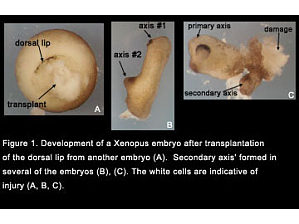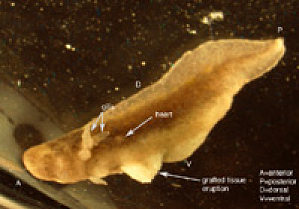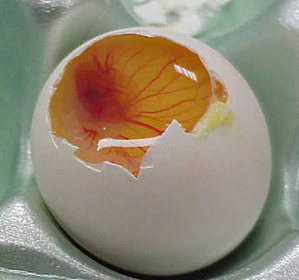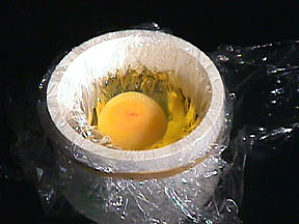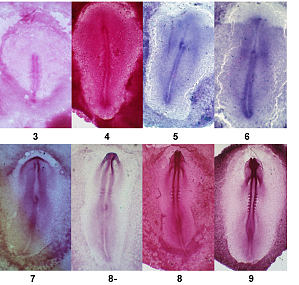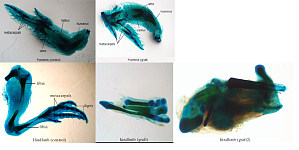I. Embryo Preparation 1) Manually dejelly embryo of appropriate stage. Use fine foreps to break hole in hard jelly coat. Remove membrane around embryo by carefully grabbing and pulling with fine force ...
Gastrulation has been celled "the most important time of your life" (Lewis Wolpert); without it you would be flat like a pancake! Vertebrate gastrulation is the process by which the simple structure o ...
IntroductionIn early stages of development in amphibian embryos very few cells' fates are rigidly determined. However previous experiments show that cells in one area of the developing embryo are dete ...
From the various microsurgical procedures of Spemann and others several developmental principles have emerged about amphibian embryos. One of the most important discoveries was the understanding that ...
IntroductionThere are two modes of development common to most species in the animal kingdom.Virtually all embryos undergo both mosaic and regulative development at some point during their growth. Regu ...
ObjectiveThis experiment will seek to demonstrate regulative development in Ambystoma mexicanum embryos. Specifically we will split the morphogenetic field that is responsible for heart formation usin ...
BackgroundSince different amphibians execute gastrulation in different ways the study of amphibian gastrulation has been complex. A popular method used to examine and explore gastrulation and determin ...
Cyclopamine and jervine teratogens derived from the skunk cabbage Veratrum californicum are known to induce holoprosencephaly in chick embryos when introduced prior to gastrulation. Holoprosencephaly ...
The development of chick embryos has been studied since Aristotle. It is one of the most intensely studied organisms. One reason for this is that there are great similarities between avian and mammali ...
1. Use sterile technique. Prewarm Howard's Ringers in petri dish andagar/albumin culture dish to 37ºC.2. Crack 2-day egg into large sterile petri dish. Alternately open blunt endof egg and remove shel ...
This experiment allows you to observe the development of a chick embryo outside its shell. Cultured chicks are also more accessible for manipulation. Compare the extent of bone mineralization of contr ...
This is an easy method for stianing cartilage that can be used with isolated or CAM-grafted limbs to study limb development or with whole embryos (8 to 12 days of incubation ).1. Fix limbs or embryos ...
In order to repeat a published experiment or have someone else repeat yours it is important to use the same materials. For developmental studies that means knowing the precise point in development tha ...
ABSTRACTFibroblast growth factor (FGF) signaling plays a signifigant role in embryonic development. Particularyl FGFs are implicated in mediating epithelial-mesenchymal interactions by means of regula ...
ObjectiveThis experiment explores the ability of the chick chorioallantoic membrane (CAM) to support an excised limb bud from a donor embryo. The chick system will allow observation of general cartila ...
Abstract Choriallantoic membrane (CAM) limb grafting functions as a method to isolate the inductive events of limb formation. Experimenters have the ability to isolate and culture tissues outs ...
The chicken is a classic organism used to illustrate the principles of basic embryology. One of the developmental systems which has been examined in great detail is the circulatory system. In the deve ...
Objective:The purpose of this experiment was to explore the effects of the growth factors bFGF and VEGF on blood vessel formation within the chorioallantoic membrane (CAM) of chick embryos. Background ...
Abstract:Sonic Hedgehog is an essential glycoprotein integral for the proper craniofacial and tail bud development in addition to the development of many other structures. Cyclopamine has been shown t ...
ObjectiveThe purpose of this experiment is to observe the effect of caffeine on the heart rate of three day old chick embryos by directly treating them with five different concentrations of caff ...




